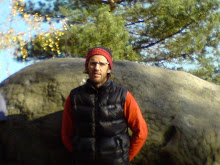



6 artists of from St Ives have been invited to show at the Howard Gardens Gallery, Cardiff in January and February of 2007. The curator, artist and writer Chris Short explains why he chose to refer to the idea of ‘the School’ in the exhibition title, and what relevance the word has for St Ives art now.
The St Ives School: 1997-2007
Dr Chris Short
Why the claim to group identity, to a “School”? Indeed, use of the word School in the title of the exhibition may seem something of an anachronism. The kind of formal, ideological and social unities that could have been construed as constituting a School in the 19th and 20th Centuries tend not to occur in the art world today. Critics and historians are more cautious about categorising such unities, justifiably concerned that their identification speaks more of the writer’s values - and even prejudices - than the truth of the artists and artworks about which they are writing.
Use of the word School here has two primary functions, the first negative and critical, the second more positive and constructive. First, the claim to the title “The St Ives School” is intended to confront. It is my contention that the importance of art being produced in and around St Ives began to fall into decline after about 1965. That art had been formally and (to some extent) ideologically challenging, and held a position of importance in the international art world. Since then, the importance of St Ives modernism as a historical movement has increased - largely as a result of Tate St Ives - and the importance of art produced in and around the town may be seen to have decreased, becoming for the most part, little more than a commodity and an object of and for tourism. The significant exception to this is the work that the exhibited artists have been producing over the last decade or more. Thus, the resuscitation of the title indicates a resurgence of important art in and around the town, and it operates to exclude and hence critique the commercial, ersatz culture that has grown to service and exploit the town’s tourist trade. The art on display in this exhibition, in its commitment to fundamental and real problems of art - that is, problems that have been addressed consistently by significant artists both in St Ives and beyond - is the rightful heir to the title “The St Ives School.”
Second, the concept “School” in many ways accurately describes the group exhibited. The English word derives from the Greek “schole”, which meant leisure, as in a place or time of leisure. According to Raymond Williams, the word “passed from meaning ‘leisure’ to the ‘employment of leisure in disputation’ and from that to both the institutional meaning and the more general description of a tendency.”[1] Each of the exhibited artists is professionally occupied as such in St Ives, and making a living as an artist is, for most, far from a leisurely activity. Nonetheless, the notion of leisure, and particularly the employment of leisure in disputation, is central to the group. Largely through shared social and leisure activities - whether a gathering in a local public house, a surf trip or a voyage in a tall sailing ship - the various positions on art held by each member of the group have been repeatedly brought together in both contestation and agreement. Over a decade or more, such discourse has led to mutual understandings, shared projects and common perspectives in relation to the visual culture and the art (modernist and contemporary) in St Ives and beyond.
From these two primary functions of the concept “School”, then, a series of characteristics of importance to the group identity can be isolated. First, geographical proximity of the artists, and a sense of place (whether established positively or negatively) that centres around a particular location and particular activities; second, continuity with art produced in and around St Ives through the modern period until the mid-1960s, whose purpose as art was to address questions about the fundamental condition of art; third, opposition to the kind of visual artefacts produced in the town that exploit and simulate the formal appearance of art to essentially financial ends; fourth, a social and intellectual grouping of continuity and dispute. These characteristics combine to support the cultural formation that this exhibition proposes. I look forward to seeing how the group develops, and where the title “The St Ives School” leads in the next decade.
The participating artists are:
Sam Hall, Andy Hughes (pictured 3rd from top), Richard Nott (pictured 2nd from top) Sax Impey (pictured bottom), Graham Gaunt, Andy Whall (pictured top)
[1] Raymond Williams, Culture, Fontana Paperbacks, 1981, p.63.
CS December 16th 2006

No comments:
Post a Comment